This article describes the criteria for assessment of nonverbal preferences in art, on the basis of which it is possible to successfully identify the personality type. The criteria described in the article is used along with an assessment of non-verbal preferences in music. Method of Associative Psycho-diagnostics (APD) ensures highly accurate identification of the personality type, objectivity and accuracy of the conclusions, provided that the client has passed all the necessary stages of diagnostics.
Key words: type, psychic energy, personality, typology, art, colour, preferences, extraversion, introversion, statics, dynamics, rationality, irrationality, logics, ethics, sensory, intuition.
“In the preferences of art as in the mirror of the soul are reflected typological properties of the personality,
its underlying motivation and psychophysiological basis.”
Olga Tangemann
The School of associative socionics, founded in 2009, has long been working on the study of nonverbal preferences in art and music. A couple of years ago to this research have been added preferences in cinema and television broadcasts. The logic of this research is simple: personality type affects absolutely everything we do, say, think and prefer. All the information is filtered by the psyche as significant or not significant, of a personal value or “about nothing.” Personality type diagnostics develops to a new level of assessment for the non-verbal preferences in music and art, and the relevance of this kind of research has been confirmed by the work carried out at the Cambridge University. Scientist David Greenberg examines musical behaviour at the intersection of personality, social, and cognitive science He believes that differences in musical experience are not random, but are rather tied to various psychological and cultural processes. His recent research has shown that personality and cognitive styles predict musical preferences and musical ability. (1)
Olga Tangemann, the author of this article, has developed her own model, which indicates the psychophysiological, sustainable basis in the selection of favourite music and art by the different personality types (2). Associative model became the basis for creating tests which differentiate the type and subtype of personality in relation to art preferences. At the moment she works on the study of musical preferences, preparing for the publication of her first book and the development of a musical test.
In this article I would like briefly to acquaint readers with the basic criteria for identifying the personality type based on the art preferences. But first, I add a few words about associative psychological diagnostics (APD) to clarify the process of collecting information for the analysis (3). The associative diagnostics includes assessment of non-verbal preferences in art and music. This stage is called the rapid orexpress diagnostics, because it does not take as much time as assessment of verbal preferences. I suggest to the client to make a list of favourite pictures and music, and at the same time I ask include 3-4 examples of music and pictures that strongly repel.
It is primarily on the identification of the basic typology groups, which are called TPE groups (type of psychic energy) (4, 5). These groups are identified at the intersection of 3 dichotomies: statics- dynamics, extraversion – introversion, rationality (leading judgment) -irrationality (leading perception). With this approach to type diagnostics it is enough to determine the dominant pair of Jung functions (intuition or sensing, logics or ethics) to identify the type of personality. This does not mean that there is no further differentiation of 8 psychological functions, but this will be discussed in more detail later in the book.
I also would like to mention that the process of type identification is not exhausted by the express diagnostics. An important part of APD is the assessment of verbal preferences based on the questionnaire, developed by O.Tangemann. The questionnaire is used for video recording to save the time of the expert and to serve as a factual information for further analysis.(6)
These are not just questions to determine the strength and weaknesses of the psychological functions, but fine psychoanalytic work of a practitioner to identify inconsistencies in client’s self –assessment. More information about associative psychological diagnostics can be found on the website of the School of associative socionics – socionics4you. (7). Now I suggest to turn to the assessment criteria of art- preferences.
To consultant, who is using my questionnaire.
No matter what method you use to define the type of personality – verbal or non-verbal – you need to answer these questions:
1) Statics or dynamics?
This attribute is most easily determined by nonverbal preferences and therefore you should start evaluation with this dichotomy.
2) Rationality or irrationality?
The leading judgment (normal, nothing strange. easy to understand), or the perception of (unusual)?
3) Extraversion or introversion?
These three features define a small group TPE. Not always all three signs are obvious. In this case, the third attribute is decided by the two other attributes which are more apparent.
4) The logic or ethics?
5) Sensory or intuition?
How are basic dichotomies and functions revealed in art?
Rationality – irrationality:
Criteria: colour; meaning – is it clear or not clear what is in the picture; usual or unusual; realistic or does not exist.
Rationality:
The semantic content of the picture is clear and it is not surprising what isin the picture. Images look orderly, arranged symmetrically, absolutely normal, fine. Such images may be perceived by the irrational type as boring because they have no zest – something special that attracts attention and trigger imagination.












Irrationality:
Special images: surprising, mysterious, unusual, interesting, causing a desire to look at them for a long time. They can present broken symmetry or a combination of unusual images, for example, blue oranges. Pictures may look a bit chaotic in the form of a collage, combine incompatible objects or unimaginable in everyday life. Pictures may contain a caricature and exaggeration, distortion of images, which results in a new unusual image and meaning. These paintings provide food for perception and imagination for the irrational type in particular. Irrational images can attract or repel, but definitely not boring or usual.












Extraversion – introversion:
Criteria: colour, volume, scale. Large images of objects that occupy the entire space of the picture. Big size, grand design, open space. Alternatively we find a lot of small objects in the picture. Local image.Attention is drawn to one small item or to a part of the bigger picture.
Introversion
Criteria: the view to the open space is shielded, obstructed, from under the cover. The person is drawn from the back or sideway, eyes closed, face is not clearly drawn or covered with hands, cloth.


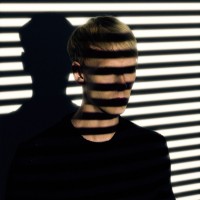
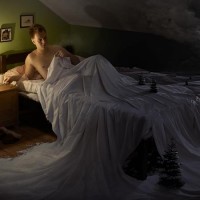
Extraversion
Criteria: Open space, a person is shown in full and in an open position, for example, is widely outstretched hands.



Statics- dynamics:
Criteria: color, shape, meaning. The presence (dynamics) of or absence (statics) of a large number of small lines; the object depicted in a static state (still) or dynamic state (moving).
The image on the picture can be mentally continued beyond the frame of the picture. Sometimes the artist deliberately displays the image beyond the picture frame to point to the process of changes, e.g. growing plant.
Dynamics:










Statics:











Logics
Criteria: colour (grey and black, often restrained), shape (geometric forms, sharp and crisp lines, sharp corners). Content: absence of people in the image; sketchy, depersonalized or distorted images of people. People as objects. The image of the objects that can be attributed to the meaning of logic and objective measurement (machines, equipment, instruments, tools, maps, compasses, etc.).




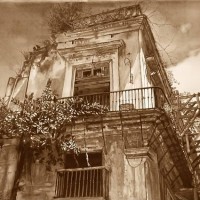
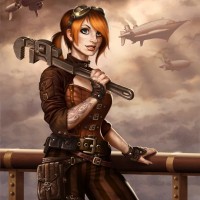






Ethics
Criteria: colour (red, pink and variety of colour); shape (variety of shape, often rounded); content (images of humans and animals, the relationship between them and their emotional states, realistic face expressions; flowers in nature or in bouquets).











Sensing
Criteria: colour; detailed content. Specific and realistic images of objects, including a nude human body; large, massive forms of the objects that can be correlated with physical strength and power (the aspect of extraverted sensing). Introverted sensing Si is associated in pictures with water (river, sea, sea world, pond; rain, hovering in the air).
Negative (irrational, logical) sensing can be revealed in the images of the physical bodily distortion (e.g. for example, decay, body parts).
Consideration of an object at close range: we look under our feet and at what is directly in front of our eyes, in the field of vision.



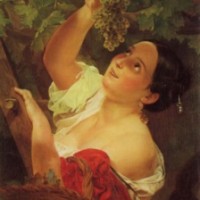


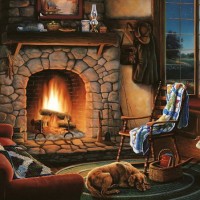





Intuition
Criteria: colour (green, blue); abstract content. Not clearly drawn, blurry images of objects and people. The complex and unusual images. The high degree of imagination and fantasy. The intuitive symbolism in the images (roads, stretching into the sky as a symbol of infinity, floating or flying images of people and objects; jumping up or falling down, the stars, sky, universe, and infinity of space. Paintings filled with air and open space. The abstract, unrealistic, images of objects and people.
Consideration of an object at a long distance, from a bird’s eye view, as well as the direction of looking up into the sky. Depth image of space, illusion of movement.












Colour theory
The theory of the interpretation of colour semantics and colour combinations was originally described in the article about the Associative model “Butterfly”:
When we refer to the notion of a balanced personality we mean a harmony between the opposites such as the mind and heart, the soul and body. On the basis of the unity of opposites within the psyche, the author associates the types of psychic energy (TPE) with socionics’ functions, and those in turn with the colour of chakras. (9). As a result, the sixteen personality types were divided into four groups:
1.Ego-types – rational extraverts. Extraverted functions: Fe (red) and Te (orange).
2.Id-types – irrational extraverts. Extraverted functions: Se (yellow) and Ne (green).
3. Superid-types – irrational introverts. Introverted functions: Ni (blue) and Si (dark-blue).
4. Superego-types – rational introverts. Introverted functions: Ti (violet) and Fi (purple/pink).

Picture 1. Association between colours and functions in socionics.
The colour-functions association described in the Butterfly model points to the link between colour preference as being related to personality types and the four inherent types of psychic energy. In contrast to the theory of M. Lusher (11), the colours do not indicate the current state of mind or the current psycho-physiological state of a person, but reflect on the deeper levels of personality, which refer to stable psychological qualities.
The warm colour range, which possesses greater powers of extraversion (red, orange – Ego block; yellow, green – Id block), is opposite to the cold colour range of introversion with much less power (pink/ light purple, violet, white – Superego; block and blue, dark-blue, black – Superid).





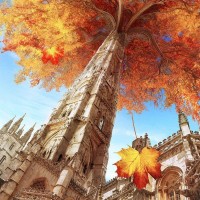






The “rational” colour range of the Ego and Superego is opposed to the “irrational” colour range of the Id and Superid on the basis of the presence or absence of the nuances of the colour red. Red is associated with the power of emotions (Fe), where the emotions are considered as one of the instruments of self-control as well as control over other people.




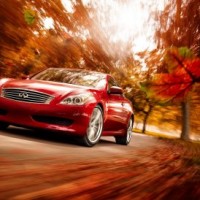
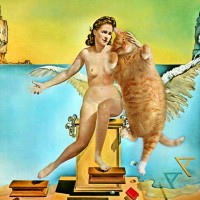





The “static” colour range of the Id (yellow, green) and the Superego (white, pink, violet) does not possess an obvious colour contrast. The absence of a sharp contrast in the combination of colours refers to the element of stability and characterizes a mental state that is predominantly static. By contrast, the combination of bright warm and dark cold colours, for example, of red and dark-blue, indicates quick and sharp changes in psychological states, which refer to the dynamic element of the psyche: Ego (red/raspberry, orange) and Superid (blue, dark-blue, black).
Statics

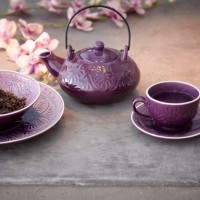




Dynamics






Typically, non-verbal diagnostics begin with the dichotomies and functions which catch the eye. When you detect only one the brightest dichotomous trait, you will automatically define the profile of the TPE. TPE profile correlates with amplification of one of the three dichotomous trait – it will set the direction for further research.
To determine the leading TPE you need to think about the distribution of statics- dynamics, ratsionality- irrationality and extraversion and introversion. Statics – dynamics is very easy to detect using method of analysing nonverbal preferences.
Think if the pictures are mainly static or dynamic, rational or irrational, extraverted or introverted?
If you find it difficult to make a decision, take a sheet of paper and a pencil and analyse each picture separately. So it will be easier to conclude.
You can start from the other side and try to assess what dichotomous trait or function is clearly missing in the picture(s )? This will lead to understand what is present but not apparent to you.
References:
1. Greenberg D. »What Your Musical Taste Says About Your Personality». [Electron. resource]. – Mode of access: http://www.iflscience.com/editors-blog/what-your-musical-taste-says-about-your-personality
2. Tangemann O.B. The Associative model. “Psychology and Socionics of Interpersonal Relationships.” 2009, N1, p. 38 – 52
3. Tangemann O.B. Requirements for the provision of materials for the APD.
[Electron. resource]. – Mode of access: http://socionics4you.com/post-1685?lang=en
4.Tangemann O.B. The Associative typology. “Socionics, Mentology and Personality Psychology. ” 2010, № 4, p. 65 — 70; № 5, p. 77 – 82.
5. Tangemann O.B. Method of associative psycho-diagnostics. [Electron. resource]. – Mode of access: http://socionics4you.com/post-471?lang=en
6. Tangemann O.B. Questionnaire by O.Tangemann. [Electron. resource]. – Mode of access:http://socionics4you.com/post-1854?lang=en
7. Tangemann O.B. Theory about sub-types. [Electron. resource]. – Mode of access: http://socionics4you.com/post-4169?lang=en
8. M. Luscher. Luscher color diagnostic. [Electron. resource]. – Mode of access: http://www.luscher-color.com/
Olga Tangemann 2016 © Associative socionics










From the discussion on FB
O. Tangemann: If we talking about lots of small detail in the picture – we are talking about introverted dynamics.
Laura M: Why would it be introverted dynamics? I’m still learning the basics of this theory.
O. Tangemann: I have made this conclusion by looking at the pictures of Superid types. And once on my seminar I had a professional artist and he confirmed this by saying that the more lines in the picture the more it is dynamic.
Irrationality is more about preception and observation – not judgement. Lots of small details create illusion of lots of movement and give food for perception. You eyes are follow from one little detail to another as if they are interconnected. You can look for a long time into this pictures wondering and you will not be bored. It is similar with the never ending process of imagination in the head of imaginative types. Like a play I suppose. One thought after another and never come to the wholistic view which is more typical for Ne.
Ne types are also wondering in their thought and speech to a certain degree but they are also easy jumping to the conclusion as if they so the whole object at once and understood it without looking into details.
O. Tangemann:Laura’s link is interesting – it is about structure of the objects: https://www.buzzfeed.com/kellyoakes/things-that-look-weird-under-a-microscope?utm_term=.pmOv3j5e3#.borjy4Xvy
No colour, not enough information for sensing. May be colour would destruct, not sure.
As far as I understood closed- up pictures are sensing pictures, because we are looking into details of an objects. but the picture must be realistic at the same time.
If it is too close like the ones from microscope – it is a differnt thing. It is more about the pattern and I see often introverted dynamics there – how elements interconnected.
Everything what is beyond normal perspective is irrationality one way or the other.
Laura M.: Could microscopic pictures also be logical? – there are some clear logical patterns that emerge in several of the photos. Some of the arrangements look rather orderly and mathematical. It depends on the picture though.
O. Tangemann: This is what I mean that we have to be careful categorising the specific art as a whole. Because we can find in there different degree of irrationality depending on what function (or functions) is leading.
At the moment I will consider not microscopic but the other funny art we have considered here but it may be related to microscopic art as well.
Is it a pattern art? is it abstract or concrete? It is not about reflecting the objects as they are in real life? Than we refer to this art as a whole as intuitive and non-realistic, irrational. Next thing is to think whether it is static or dynamic art? If it is dynamic then it will be in between Superid and Ego. If it is introverted then Superid and Superego. If it is irrational them Superid and id.
And then we can try and categorise any picture in particular. If we come to the conclusion that Superid, for example, is a leading TPE for this art or we decide that this art is better described as introverted then …we may see the functions of this TPE or introversion as nearly always present in those individual pictures.